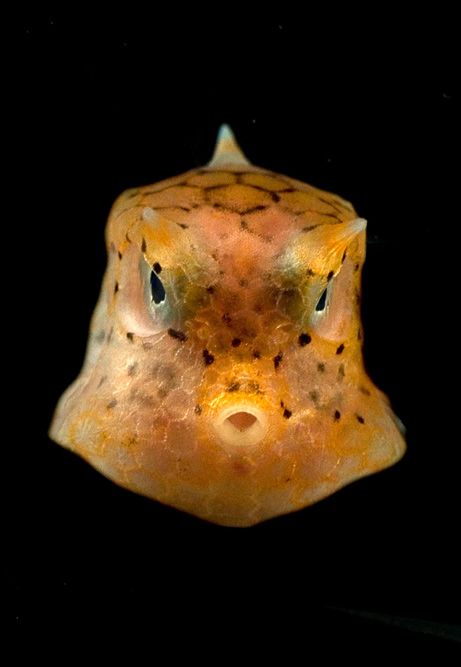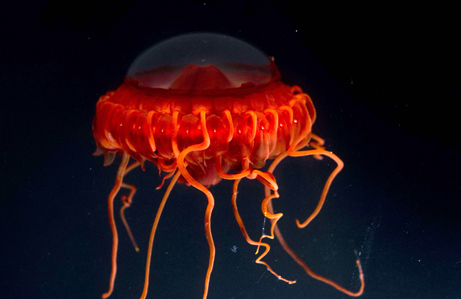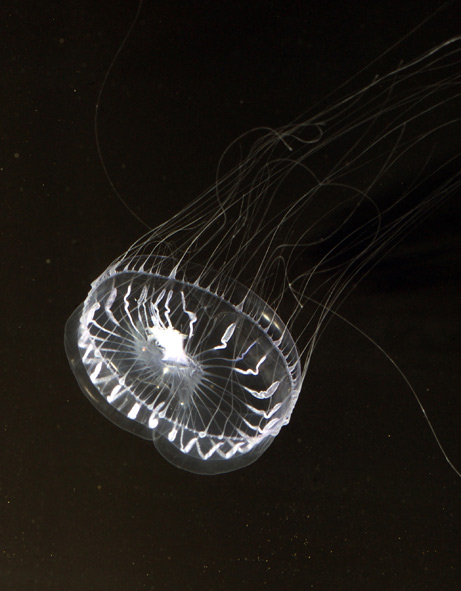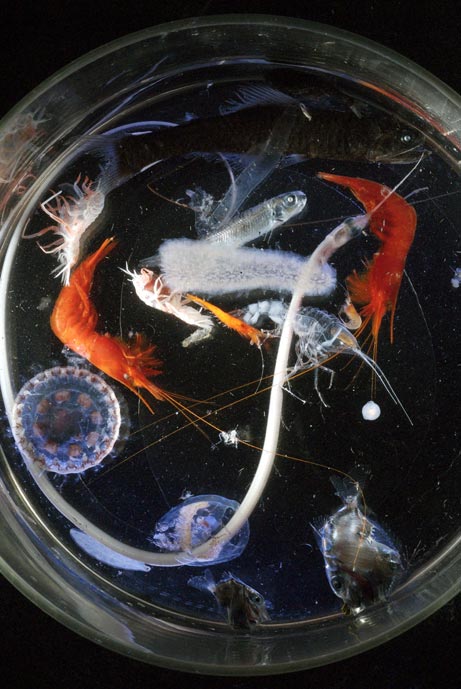New Species Found in Remote Asian Sea?
A square jaw and edgy brow give a distinctive profile to this boxfish, one of many exotic marine creatures recently found by scientists exploring Southeast Asia's Celebes Sea.The international team of researchers recently returned from two weeks in the Celebes, a little-explored sea between Malaysia and the Philippines that is home to one of the world's deepest ocean basins.
The Celebes's relative isolation and chilly depths make it one of the world's most richly diverse marine habitats, likely hosting species that have lived in seclusion for millions of years, expedition leader Larry Madin told the Associated Press.
"This is probably the center where many of the species evolved and spread to other parts of the ocean, so it's going back to the source in many ways," said Madin, who is director of research at the Massachusetts-based Woods Hole Oceanographic Institution (WHOI).
The team found several species that are likely new to science, Madin added, including a swimming sea cucumber, a black jellyfish, and a spiny orange worm with tentacles growing out its head.

A 0.2-inch-long (0.5-centimeter-long) larval squid is seen through a microscope's lens in this handout image released October 16, 2007, by WHOI.
The young squid was caught within 328 feet (100 meters) of the surface of the Celebes Sea, an unusual basin that lies between the southern Philippines and Malaysia. Researchers exploring the region recently caught a variety of marine animals, some of which might be new to science.
The largely unexplored area boasts especially deep water surrounded by shallower ocean, offering researchers hope of finding new creatures that might have developed in isolation in the sea's depths.

A red medusa jellyfish of the genus Atolla is seen swimming in this handout photograph from WHOI's expedition to the Celebes Sea in October 2007.
The deep-sea jellyfish is among a handful of creatures—some of which might be new species—recently caught by the Filipino-U.S. team in the waters south of the Philippines' Sulu Archipelago.
The animal's deep red hue is actually common among these jellyfish, according to the Woods Hole team. Although it is not visible in the ocean's dark depths, the color masks any bioluminescence given off by prey trapped inside the jellies' guts.

A translucent jellyfish of the family Aequorea swims near the surface of Southeast Asia's Celebes Sea in October 2007.
The delicate jelly was among the hundred specimens recently collected by scientists studying the unexplored waters between Malaysia and the Philippines.
The research, conducted as part of the Inner Space Speciation Project, aims to document marine life in the remote sea, which plunges to depths of 16,500 feet (5,000 meters).

An image of a sample dish full of tiny marine life reveals several jellyfish, a lantern fish, a snipe eel, two orange shrimp, and a jellyfish-like creature called a pyrosome. WHOI released this and other images on October 16, 2007, during a media announcement.
Some of these animals might be new to science, according to WHOI's Filipino-U.S. project, which scoured the deep waters of the Celebes Sea near the Philippines earlier this month.
Team leaders said it will take weeks of follow-up research to determine whether any of the animals are actually new species. The researchers expect to release a full report in early November.

Subscribe to:
Post Comments
(
Atom
)



1 comment :
It looks like a fondant fancy - and I'm on a diet, yum yum
Post a Comment